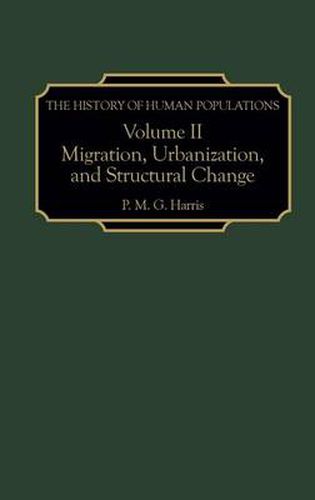Readings Newsletter
Become a Readings Member to make your shopping experience even easier.
Sign in or sign up for free!
You’re not far away from qualifying for FREE standard shipping within Australia
You’ve qualified for FREE standard shipping within Australia
The cart is loading…






Building upon models set forth in Volume I of this work, Harris turns his attention to populations on the move. Through examples from literature on migration, the Atlantic slave trade and slave demography, and urbanization, this study demonstrates how all types of migration-free and forced, long-distance and local-build up and are then absorbed into populations according to the same patterns that characterize populations in general. What causes these few closely related trends to reappear, Harris argues, is the way structures of populations alter, according to a standard absorption of these migrations, and react to other events via changes in births, deaths, and composition by age and sex.
Harris finds that something fundamental in the process of demographic renewal consistently imprints a few common shapes upon many kinds of demographic, as well as social and economic, developments. Fresh perspectives on the business of the slave trade and the much-discussed modern shifts from agriculture into other employments, and from countryside to town or city, illustrate how ubiquitously and how fundamentally demographically generated trends shape social and economic movements. A future volume will identify and explain the origins of such ever-present patterns of change in the dynamics of fertility, mortality, and demographic renewal.
$9.00 standard shipping within Australia
FREE standard shipping within Australia for orders over $100.00
Express & International shipping calculated at checkout
Building upon models set forth in Volume I of this work, Harris turns his attention to populations on the move. Through examples from literature on migration, the Atlantic slave trade and slave demography, and urbanization, this study demonstrates how all types of migration-free and forced, long-distance and local-build up and are then absorbed into populations according to the same patterns that characterize populations in general. What causes these few closely related trends to reappear, Harris argues, is the way structures of populations alter, according to a standard absorption of these migrations, and react to other events via changes in births, deaths, and composition by age and sex.
Harris finds that something fundamental in the process of demographic renewal consistently imprints a few common shapes upon many kinds of demographic, as well as social and economic, developments. Fresh perspectives on the business of the slave trade and the much-discussed modern shifts from agriculture into other employments, and from countryside to town or city, illustrate how ubiquitously and how fundamentally demographically generated trends shape social and economic movements. A future volume will identify and explain the origins of such ever-present patterns of change in the dynamics of fertility, mortality, and demographic renewal.